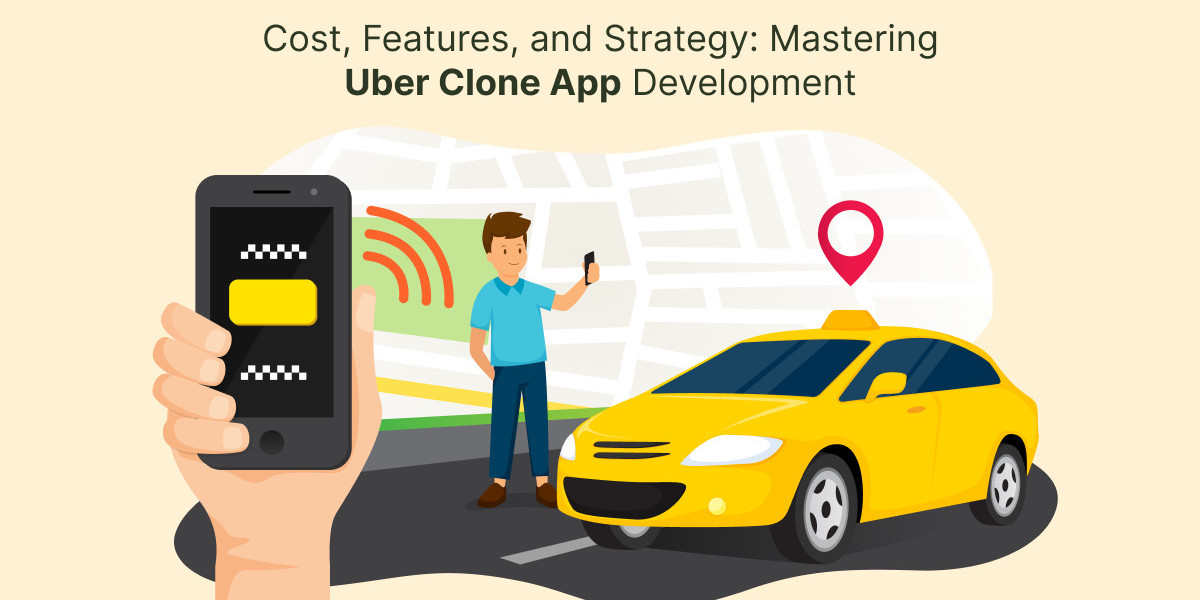The ride-hailing industry continues to evolve rapidly in 2025, with startups and entrepreneurs seeking scalable solutions to enter the market efficiently. One of the most effective ways to launch a mobility platform is through anUber clone appa customizable, white-label solution that replicates Ubers core functionality while allowing full branding and feature control.
This guide breaks down the cost structure, essential features, and strategic roadmap required to master Uber clone app development and build a profitable ride-hailing business.
Development Cost Breakdown
The cost of developing an Uber clone app depends on several factors, including the number of platforms, feature complexity, tech stack, and team location. Here's a general breakdown:
Development Tier | Estimated Cost Range | Description |
Basic MVP | $25,000 $40,000 | Core features like booking, GPS, payments |
Mid-Level App | $40,000 $80,000 | Includes analytics, multi-payment, surge pricing |
Advanced + AI Features | $80,000 $150,000+ | Smart routing, dynamic pricing, personalization |
Key Cost Drivers:
- Platform choice (iOS, Android, Web)
- UI/UX design complexity
- Real-time features and integrations
- Backend scalability and cloud infrastructure
- Development team location and expertise
Core Features of an Uber Clone App
To compete in the ride-hailing space, your app must deliver a seamless experience for riders, drivers, and admins. Heres a breakdown of the must-have modules:
Rider App
- Ride booking and scheduling
- Fare estimation
- GPS tracking and ETA updates
- Multiple payment options (card, wallet, UPI)
- Ratings and reviews
- Push notifications
- Ride history and receipts
Driver App
- Trip requests and navigation
- Earnings dashboard
- Availability toggle
- Trip history and performance metrics
- In-app chat with riders
- Document upload and verification
Admin Panel
- User and driver management
- Commission and pricing controls
- Trip analytics and reporting
- Promo code and referral management
- Dispute resolution tools
- Multi-city configuration and geo-fencing
Recommended Tech Stack
Choosing the right tech stack ensures performance, scalability, and security. Heres a proven combination:
Component | Technologies |
Frontend (Mobile) | Flutter, React Native |
Backend | Node.js, Laravel, Django |
Database | PostgreSQL, MongoDB, Firebase |
Cloud Hosting | AWS, Google Cloud |
Maps Navigation | Google Maps API, Mapbox |
Payment Gateway | Stripe, Razorpay, PayPal |
Push Notifications | Firebase Cloud Messaging |
SMS OTP | Twilio, Nexmo |
This stack supports real-time updates, cross-platform compatibility, and secure transactions.
Strategy for a Successful Launch
Launching an Uber clone app requires more than just technical executionit demands a strategic approach to market fit, scalability, and monetization.
Read More: Start a Ride-Hailing Business with Taxi Clone App
1. Start with a Focused MVP
Avoid overloading your app with features at launch. Begin with 35 core services such as taxi booking, rentals, and delivery. This allows you to validate demand and optimize performance before scaling.
2. Localize for Market Fit
Adapt your app to regional preferences by supporting local languages, currencies, and payment methods. Offer services like bike taxis or cash payments where relevant.
3. Build a Strong Provider Network
Attract and retain drivers by offering:
- Easy onboarding
- Flexible payout options
- Real-time earnings tracking
- Incentives for high performance
A reliable provider base ensures consistent service quality and user satisfaction.
4. Implement Smart Monetization
Use a hybrid revenue model that includes:
- Commission per ride
- Subscription plans for drivers
- In-app advertising
- Surge pricing during peak hours
- Wallet transaction fees
Diversifying income streams improves financial stability and growth potential.
5. Invest in Marketing and ASO
Promote your app through:
- Social media campaigns
- Influencer partnerships
- App store optimization (ASO)
- Referral and loyalty programs
These tactics help drive downloads and build brand awareness.
6. Monitor KPIs and Optimize
Track key performance indicators such as:
- Ride volume
- Cancellation rates
- User retention
- Driver activity
- Revenue per trip
Use analytics to guide feature updates and operational decisions.
Advanced Features to Consider
To stand out in a competitive market, consider integrating:
- AI-powered route optimization
- Dynamic pricing algorithms
- Ride pooling and car-sharing
- Multi-language and multi-currency support
- In-app video support for customer service
- Heat maps for demand forecasting
- Driver incentive programs
These features enhance user experience and improve operational efficiency.
Conclusion
Mastering Uber clone app development in 2025 requires a strategic blend of smart budgeting, feature planning, and market alignment. By understanding the cost structure, integrating essential and advanced features, and launching with a focused strategy, you can build a ride-hailing platform that scales profitably.
Partnering with a reliable clone app development company ensures your app is built with performance, compliance, and scalability in mind. Their expertise in modular architecture, localization, and real-time systems helps you avoid costly mistakes and accelerate your time-to-market. Whether you're targeting a local niche or planning a global rollout, the right development partner can turn your Uber clone vision into a thriving business.
FAQs
1. How much does it cost to build an Uber clone app in 2025?
Depending on features and complexity, costs range from $25,000 for a basic MVP to $150,000+ for advanced apps with AI and multi-platform support.
2. Can I launch with just a few services and expand later?
Yes. A modular architecture allows you to start lean and add services like rentals, deliveries, or corporate bookings as you grow.
3. Whats the best monetization model for an Uber clone app?
A hybrid model works bestcommissions, subscriptions, surge pricing, and in-app ads provide diversified revenue streams.
4. How long does it take to develop an Uber clone app?
Timelines vary, but most apps take 46 months from planning to launch, depending on team size and feature scope.
5. Should I build from scratch or use a clone app solution?
Using a clone app development company offers faster deployment, lower costs, and proven architectureideal for startups seeking quick market entry.








